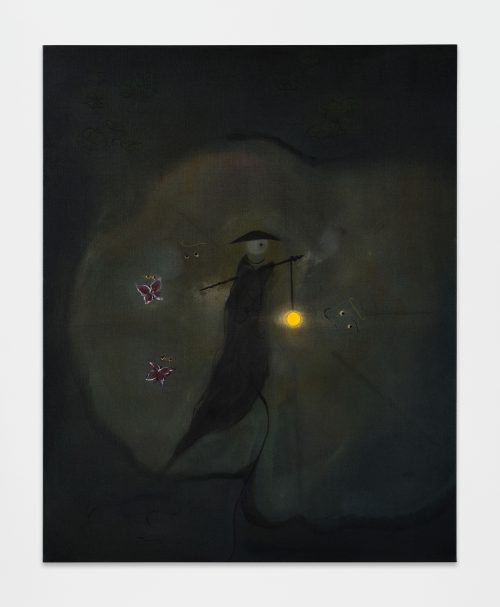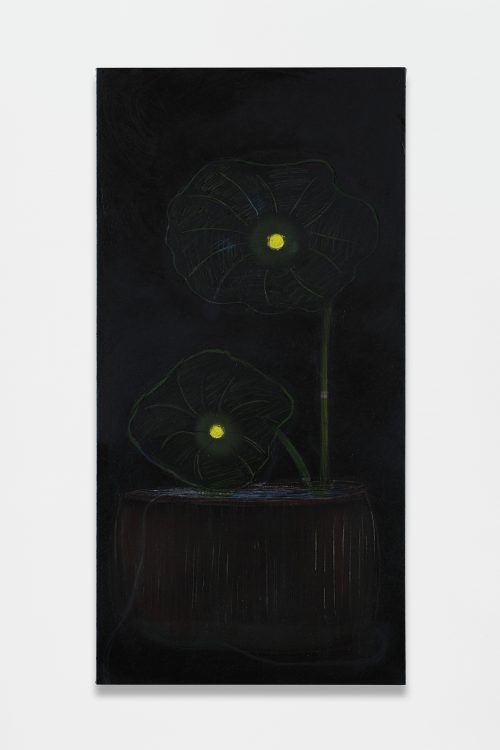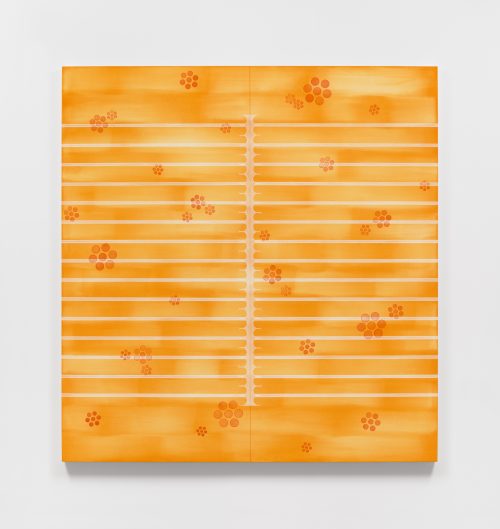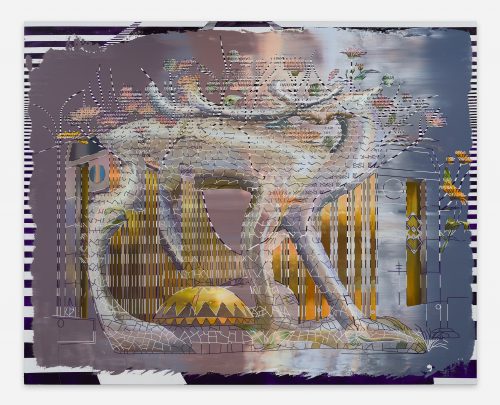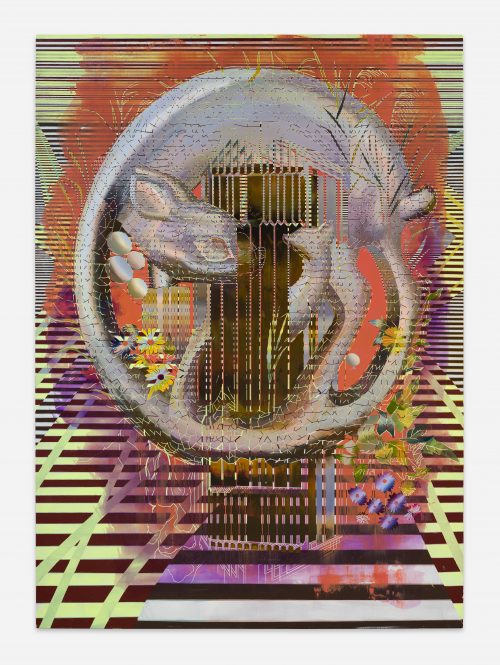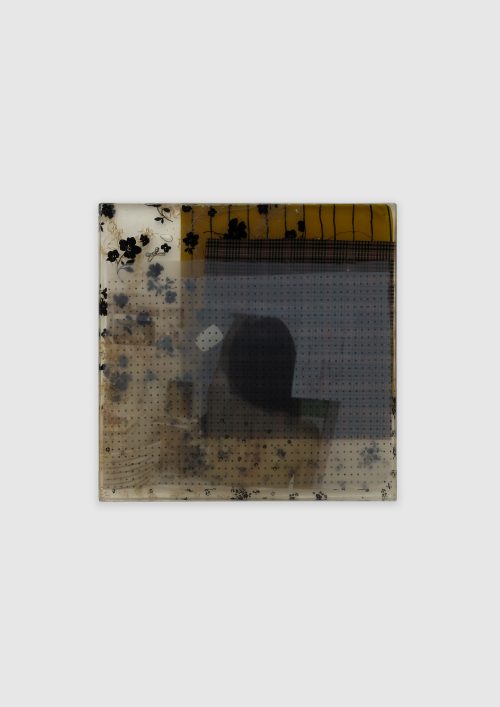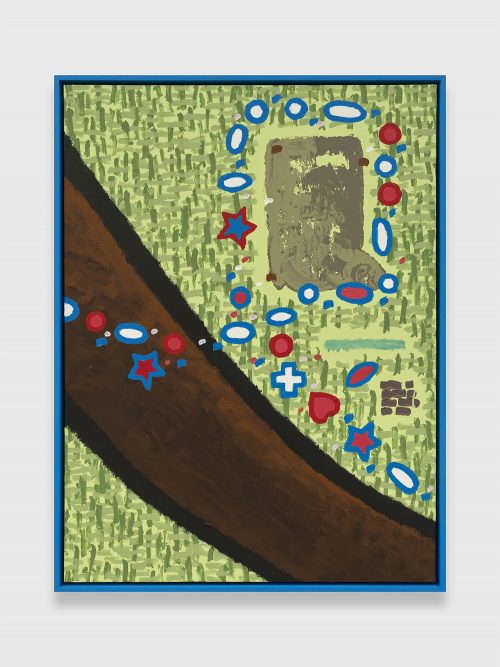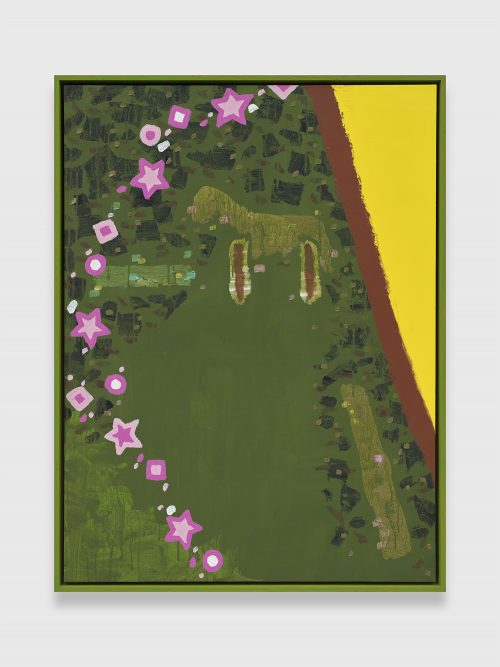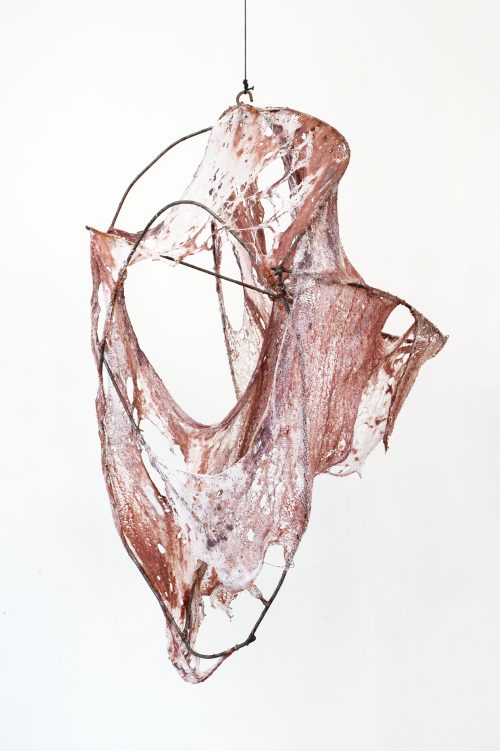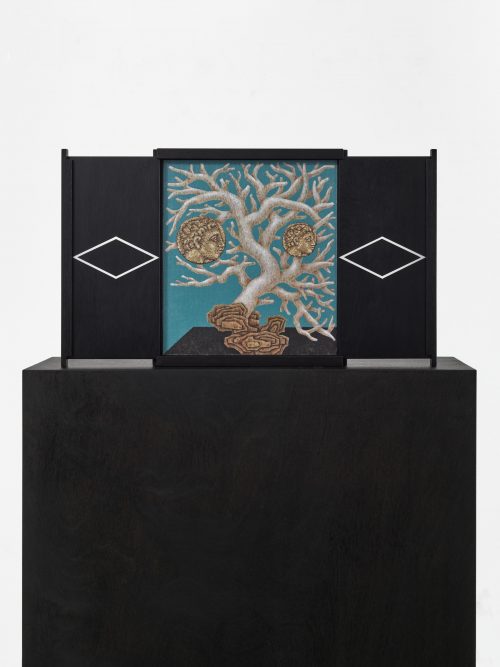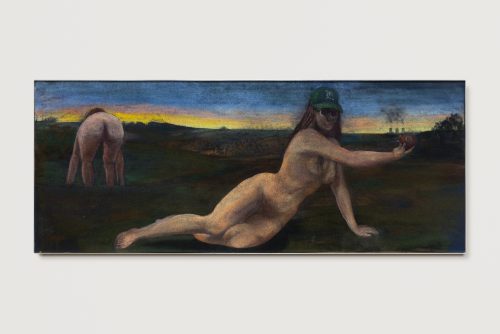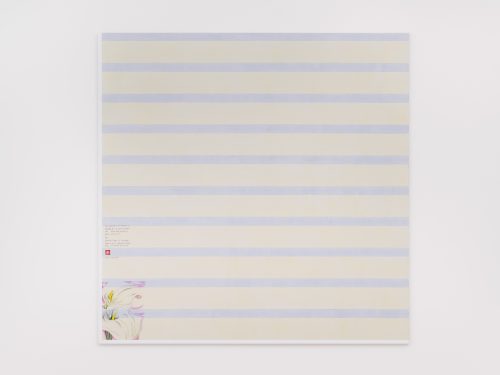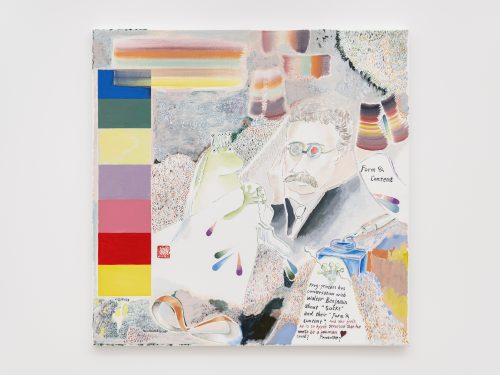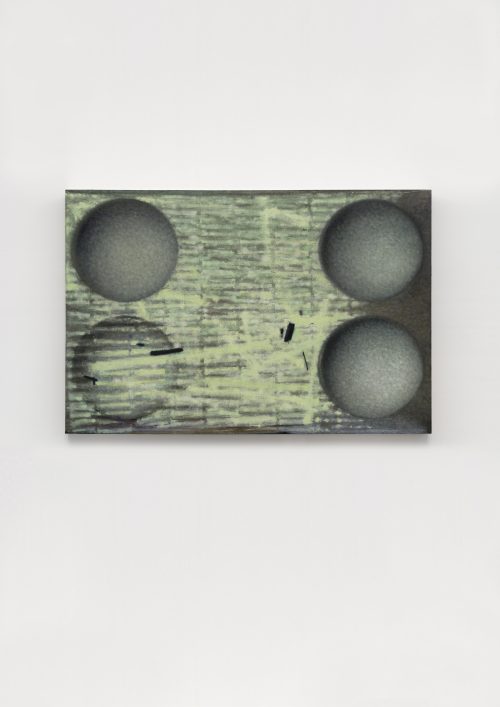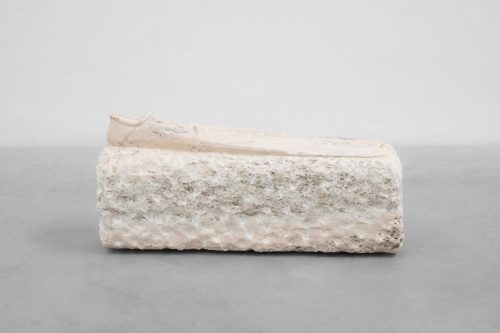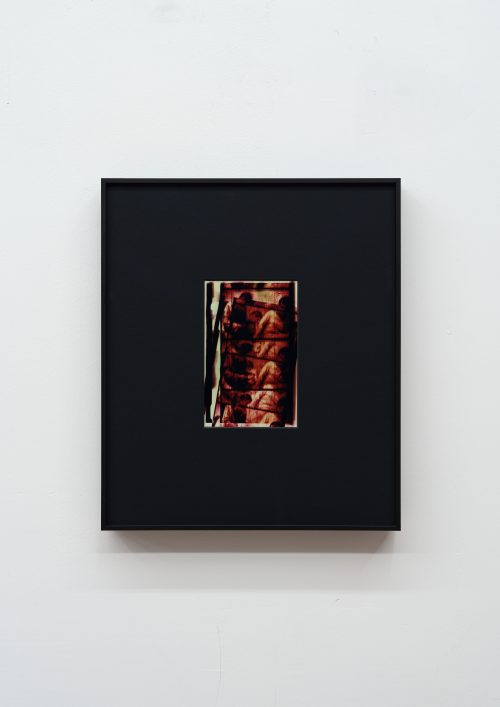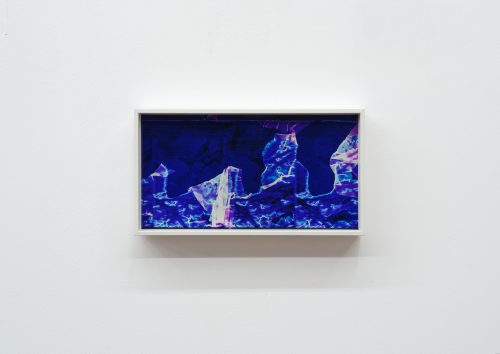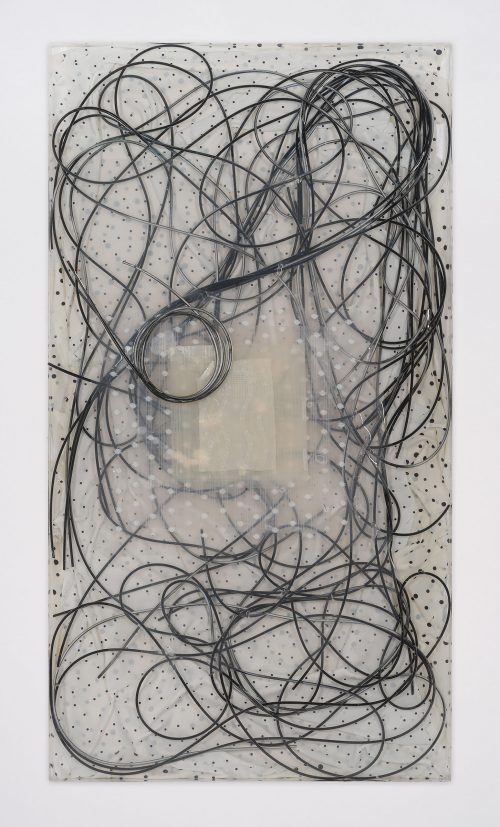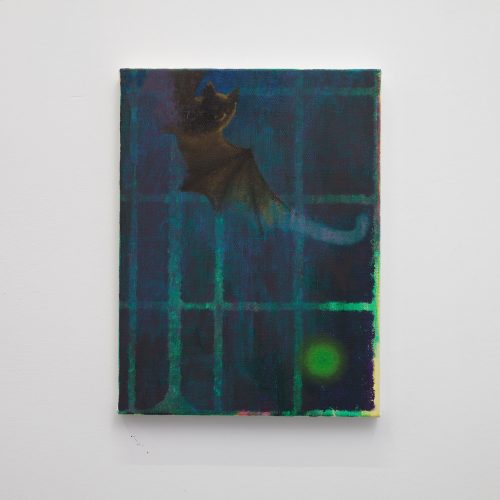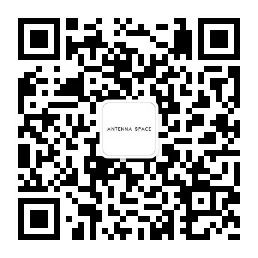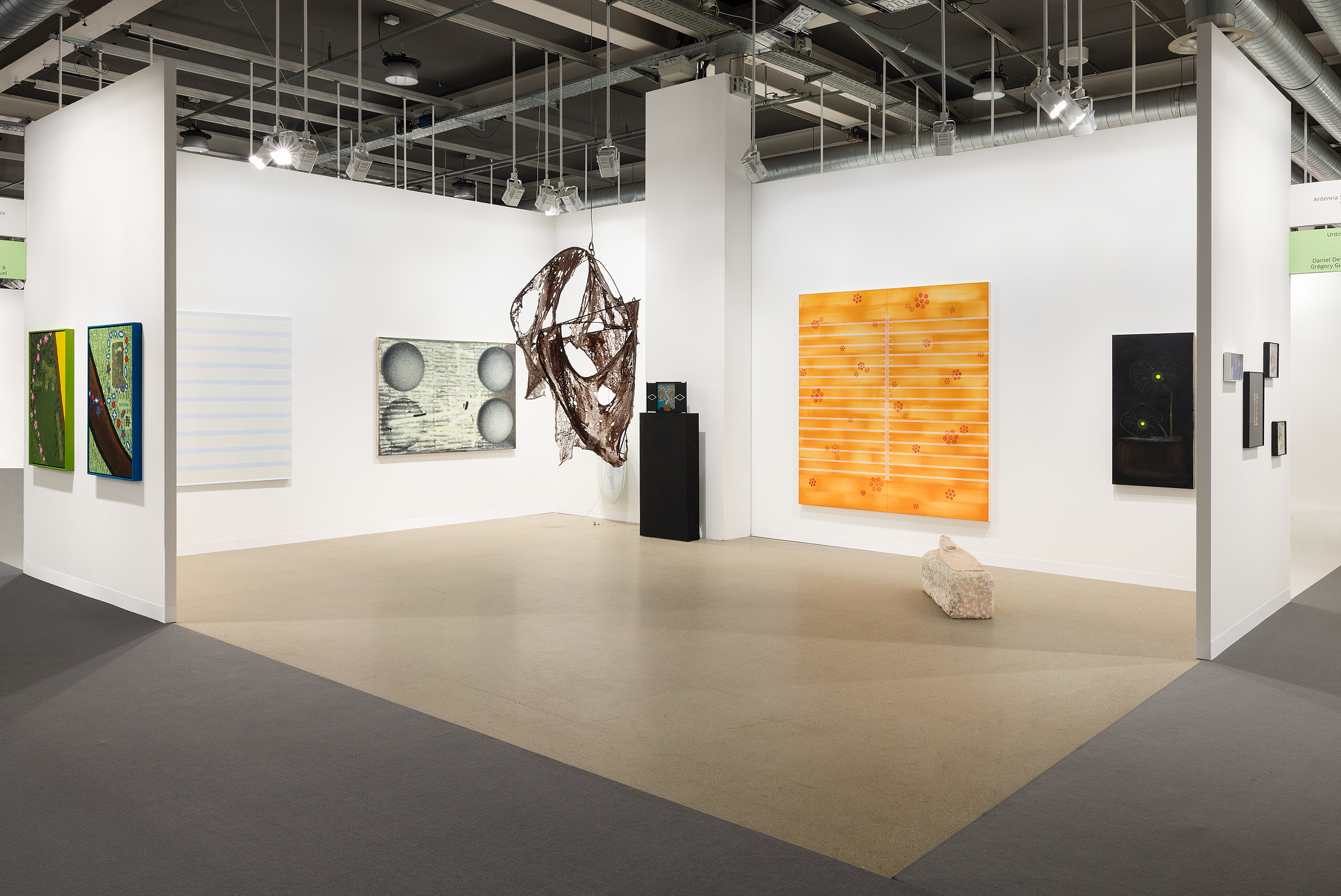
Antenna Space is honored to announce our participation in Art Basel 2025. The exhibition presented in the main exhibition area “Galleries,” the “Unlimited” section, and the “Basel Social Club”.
–
The “unlimited” unit booth U36 will feature a special exhibition of a triptych stone sculpture by Daniel Dewar & Grégory Gicquel, while Cui Jie‘s works will be presented at the “Basel Social Club.” Booth N9 in the main exhibition area will present works by 13 artists:
Daniel Dewar & Grégory Gicquel
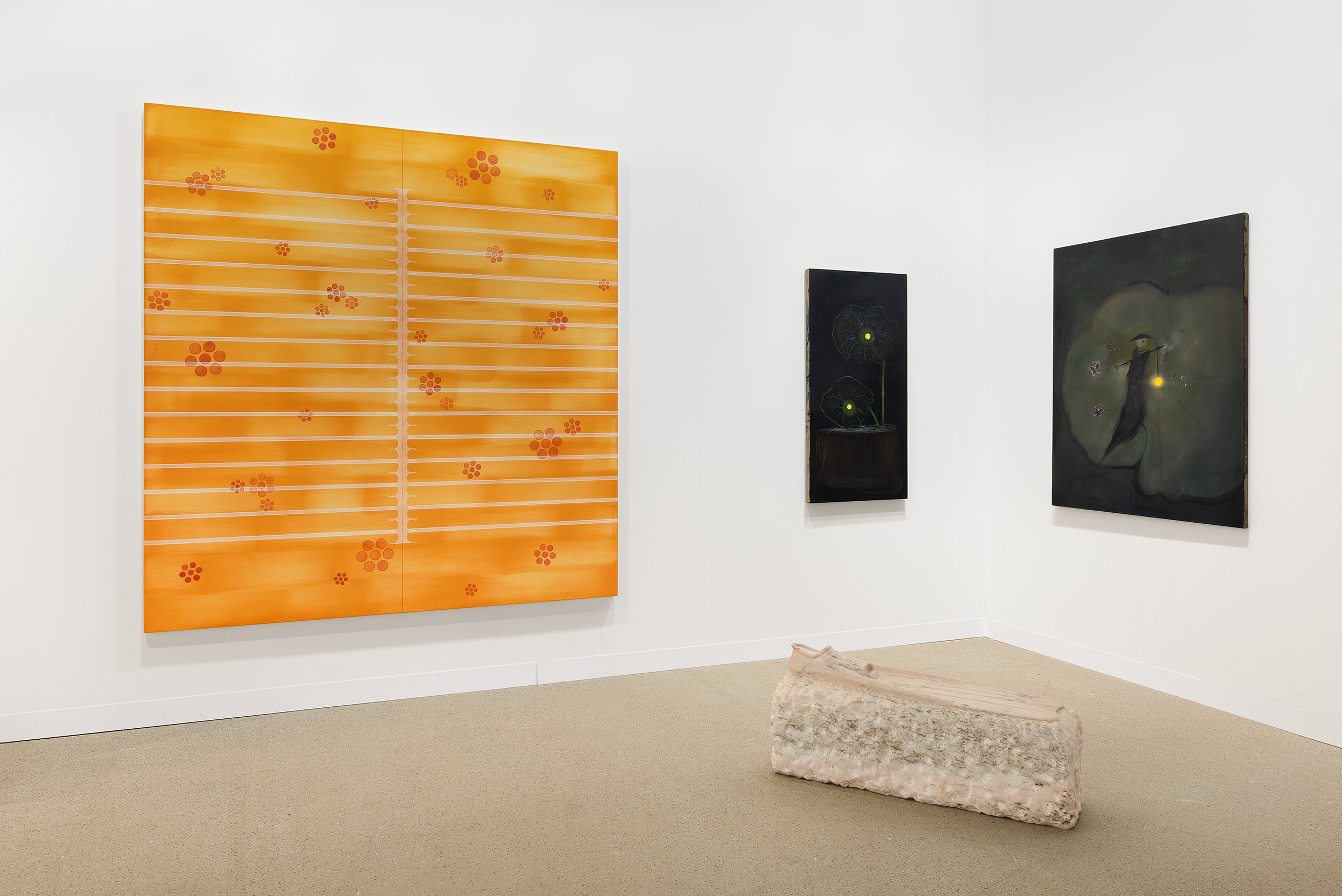
“Angel x” is a continuation of Hanna Hur’s pursuit of imaging angels. The angel’s body bisects the painting and its limbs reach outward, spanning beyond the edges of the canvas. A red line as a vein or a nerve runs through its spine. In this painting, Hanna has shed the grid that normally serves as a starting point, relied on the rhythm of the yellow brushstroke and the axis created by the angel’s body to structure the picture plane. A bloom of red flowers (wheels or suns) both scatters and pins the gaze. Hanna Hur’s pictorial realm constructs a transcendent visual theology, where repetitive brushstrokes become invocations to the divine. The angelic imagery in her work transcends all optical limitations, serving as both absolute witness to earthly joys and sorrows, and a metaphorical transcendence of human finitude.
In a quiet shimmer, the self-portrait surfaces with subtle insistence, gently self-contained amid silence and concealment. “Upon the Night Lotus” (2024) shows to faintly glowing blooms, suspended in darkness-quiet, distant, almost weightless. “Butterfly Dreams” (2025) by Owen Fu draws closer, a soft lotus leaf, a small lantern, drifting butterflies, and glimmering eyes hidden in the dark form a subtle landscape. Together, the two works trace a slow gaze inward—from the edge of things to the space of a dream. They don’t try to light up the night, but let you grow accustomed to its warmth.
“Flipper” (2022) carves the form of diving fins from pink Aurora Rose marble, continuing the artist duo’s exploration of the dialectical relationship between flesh and objects. The tension between the hard marble materiality and fluid implications imbues the static sculpture with kinetic memory of water, while the stone’s veining analogously evokes absent human forms through skin-like textures. As artificial organs mimicking marine creatures, the flippers simultaneously point to humanity’s evolutionary desire for bodily enhancement and reveal technological civilization’s transgression against natural faculties. Through playful material transformation, the artists liberate diving equipment from functionalism, transforming it into a visual apparatus that interrogates bodily boundaries, species differentiation, and techno-ethics.
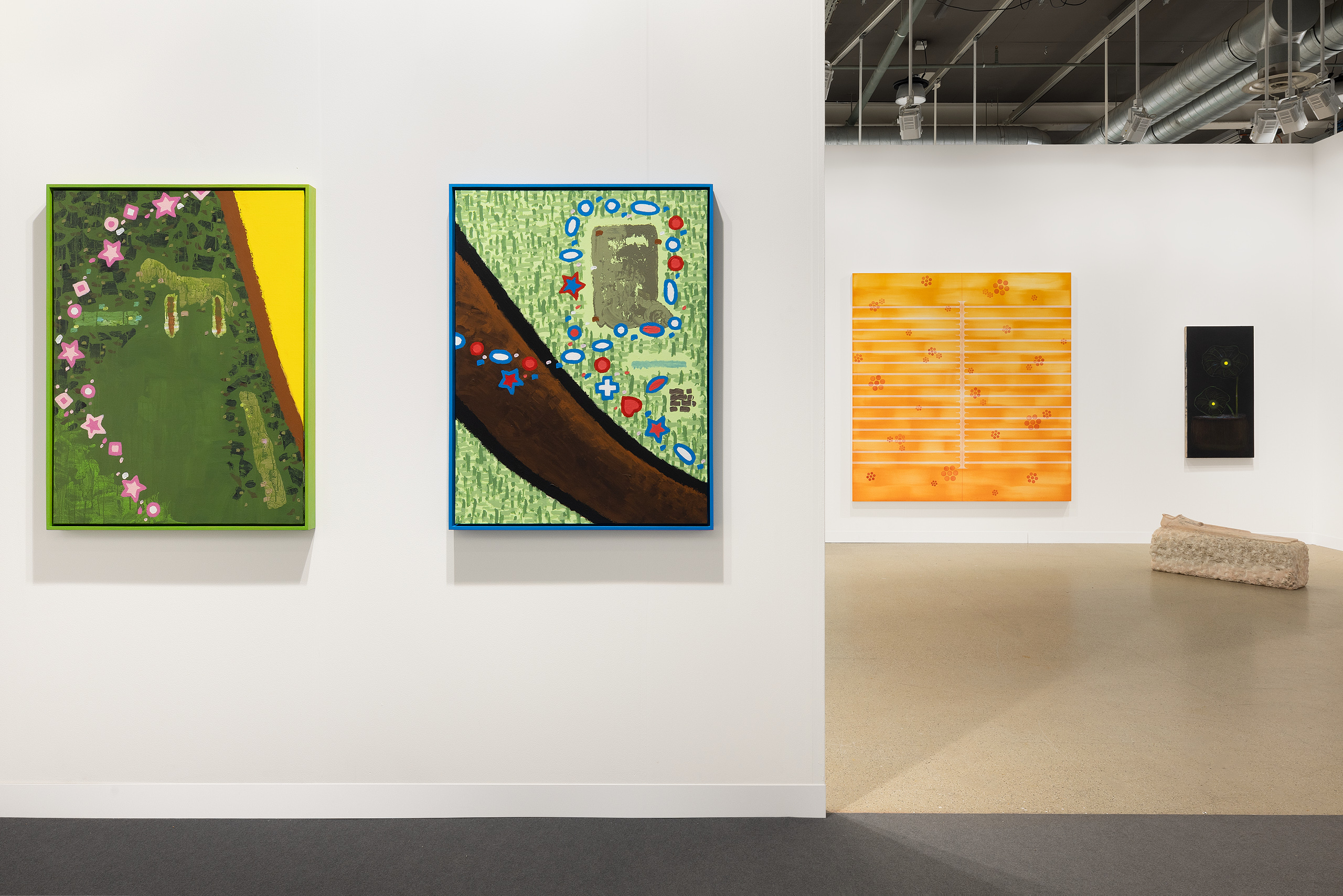
Yu Honglei‘s painting is composed of distinct color blocks, shapes, and textures. While abstract in composition, these forms evoke concrete associations—like a necklace around a little girl’s neck, a post-meal dining table scattered with children and animals, or an intricate, hidden network. These elements resemble faded memories: though blurred, their emotional resonance remains vivid—the hue of candy wrappers, the warmth of an animal’s nose, the faint jingle of a necklace swaying during a carefree run… They exist softly and quietly, collectively forming a portrait of “sweetness.”
Zhou Siwei‘s painting practice is characterized by a unique intertwining of “emotion” and “rational imagination”, marking a continuation of his imaginative interplay between figurative and non-figurative elements within the language of imagery. In Solar Panels (Bat. Night) (2025), a nocturnal bat in flight coexist with diurnal solar panels within the same temporal space. The creature glide through dimly lit area, yet find itself circumscribed by the grid-like structures of solar panels. The mottled, somber light patches evoke an intimate whisper, while its regimented surface maintains a rational orderliness that embraces all ineffable intuitions and fantasies.
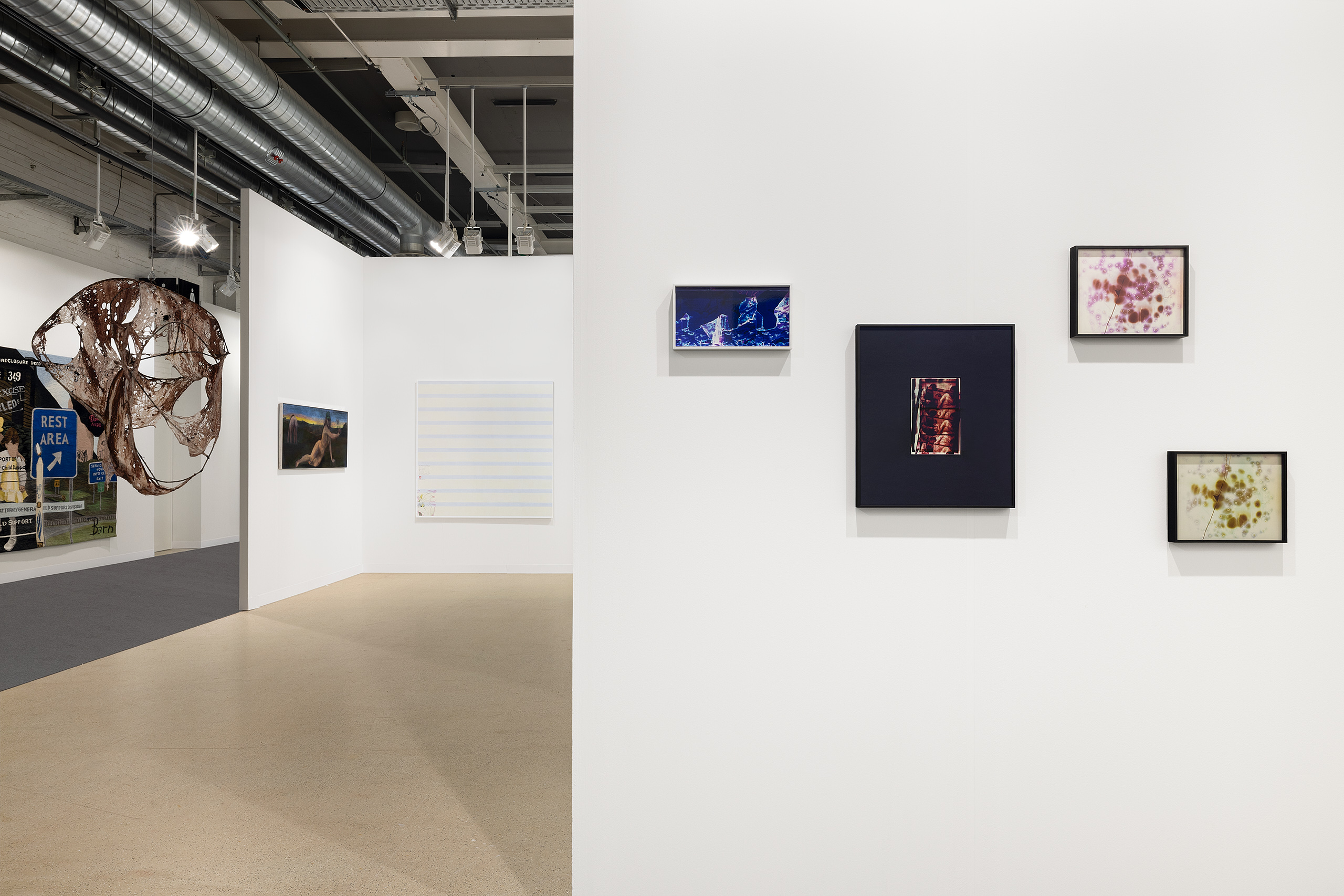
Peng Zuqiang‘s latest series investigates experimental applications of traditional darkroom techniques, employing chemical erosion and manual interventions to transform technical imperfections into visual language through physically altered processes. In “Nameless Island in Three Folds” (2025), An archival 8.75mm film print of the film The Nameless Island , was photogramed onto 16mm print film by the artist. The artist takes the DIY printed negative to the under the photographic enlarger, and moved the photographic paper two times, to create the effect of ‘multiple exposure’ on the final print. The Original image, which are three consecutive frames from the film, are abstracted and blurred by such hand manipulation, and made into c-print. The work replaces cinematic narrative with abstract traces, demanding viewers to unearth obscured historical memories through fragmented visual clues and displaced phantoms at the material level.
Stanislava Kovalčíková is known for her provocative painting style, blending dark humor, erotic tension, and the absurdity of mythological deconstruction. Eve (2025) reconstructs the myth of human origins with the disruptive ethos of punk aesthetics. While parodying the iconic composition of Michelangelo’s The Creation of Adam, the work transforms the divine touch into a bacchanal of feminine desire. In this vision, Eve is no longer a passive creation but a rebel who dismantles patriarchal narratives through sacrilegious defiance—Baroque beauty and Eden’s dreamlike imagery are replaced by industrial waste in the background, forging a 21st-century profane ritual——a fragmented rock ‘n’ roll rebellion.
Mire Lee‘s Open Wound series suspends fabric from ceiling-mounted metal chains—a metaphorical “skin” inspired by the communal bathing facilities of coal miners, where work garments hung in collective repose. The artist materializes the violence of production as an ongoing metabolic process through the confrontation between rigid industrial materials and pliant textiles. The work compels viewers to navigate emotional transformations between revulsion and compassion, fear and desire. As industrial history’s collective scars become penetrable installations, binary boundaries—hard and soft, external and internal, individual and collective—begin dissolving. What emerges is an archaeological site of postindustrial corporeal potentialities, where every fold documents unspoken pain and resilience within mechanization’s progress.
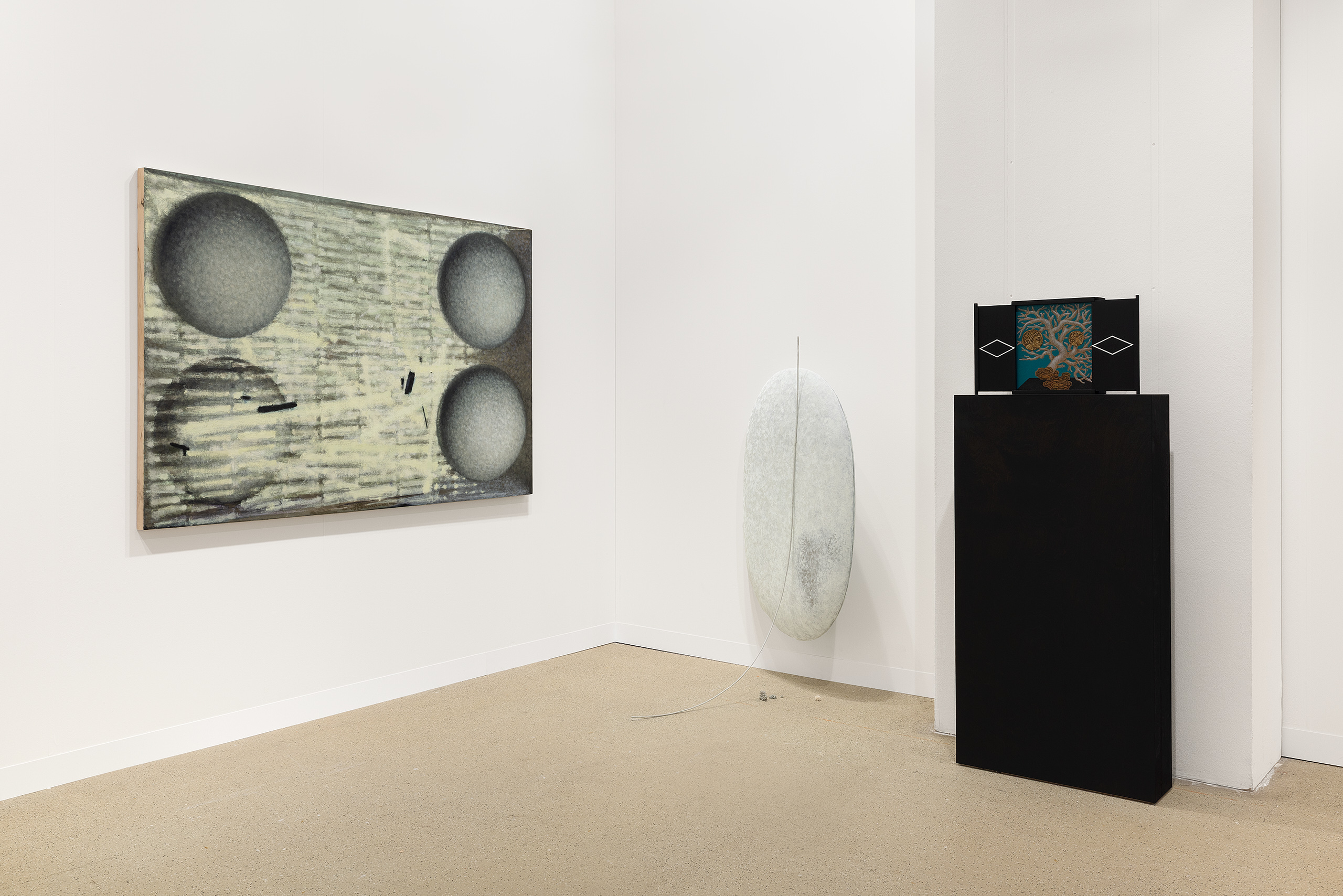
Stella Zhong’s work articulates distance. Her sculpture brings together vast planes and particulate objects in idiosyncratic forms verging on the geometric, infrastructural, and at times, seemingly alive or even edible. She builds spaces precisely to break them down into somewhere metaphysical—often with a precarious placement, a thin thread—in which centers shift and powers become unsettled: incommensurable states intersecting to create new histories. Stella Zhong’s latest sculptural work constructs a charged vertical theater of power, transforming the physical dimension of “altitude” through acute scale-shift to achieve a conversion from visual representation to embodied cognition, while harboring latent potentiality and momentum within static extremity.
Li Yong Xiang‘s series employs “head sculptures” as its artistic manifestation, integrating paintings into sliding-door cases to simulate anatomical “opening/closing” structures. This approach interrogates the duality of visual perception—the dialectical relationship between visibility and invisibility, display and concealment. Formally, it extends European sculptural bust presentation traditions while simultaneously referencing archaeological artifact display methodologies. The vessel-like coral Penzai in the painting serves multiple metaphors: they allude to human cardiovascular system while echoing 17th-century Dutch anatomist Frederik Ruysch’s “anatomical diorama”—objects that functioned simultaneously as scientific specimens and curiosities collected by aristocracy. The work formally constructs multiple forms of circulation: the blood’s physiological circulation, the market circulation of objects, the dissemination chains of knowledge, and the politics of exhibition. It persistently mutates across different systems, between opening and closing.
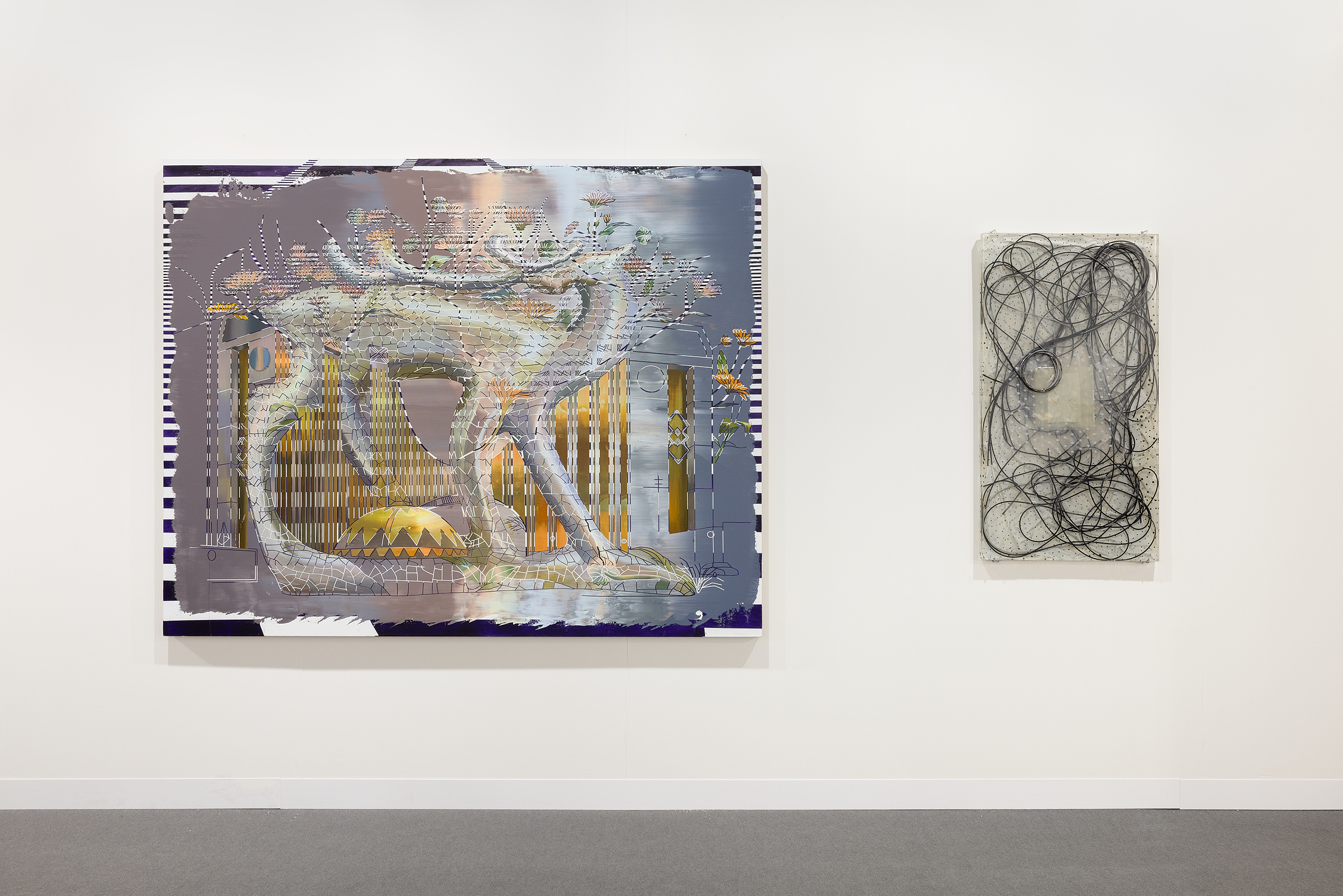
Shuang Li approaches resin as an emotional medium and a metaphor for the persistence of language. “Skin Deep”(2024) continuing the artist’s exploration of the two characteristics of “transparency” and “temporariness”, these structures resemble construction fences or the interlayers of temporary buildings. They serve as barriers for separation yet, due to the semi-transparency of their materials, also create an ambiguous form of communication. “La Belle” (2024) introduces a taut interplay between soft fabric and electrical cables, staging a quiet struggle between body and technology, disorder and submission. Personal memories and found objects are mixed with resin. Light passes through layers of resin of varying density, and the objects intertwine and collide with each other, like fragments of consciousness floating on the surface. Their actions, though subtle, are profound, leaving an indelible impression that transcends mere words.
Cui Jie‘s Ceramic Deer and the BIDC building, Lomé (2025) reconstructs the power dynamics of postcolonial urban landscapes through meticulously crafted visual syntax. The landmark financial architecture of West African cities is abstracted into striated patterns, interlaced with the household ceramic deer form that proliferated in China during the late Reform and Opening-up period. The antlers blossom like vines, spreading through the concrete grid of the financial edifice—their lustrous Eastern texture resembling fissures where softness permeates rigid order. The railroad tracks spanning the entire lower layer of the composition, alluding to the underlying logic of modern urban development: a foundation built upon global political exchange and commercial interconnectivity.
–
Unlimited
Booth U36
Collaborating as a duo since 1997, Daniel Dewar and Grégory Gicquel have spent nearly three decades exploring and experimenting with an encyclopaedic range of industrial and craft techniques, tools, and materials. Through this singular approach, their practice continually interrogates the role of the artist—and, more broadly, humankind’s relationship to labour and production. In recent years, the duo has expanded this line of inquiry to evoke the complex interdependence between living beings and the constructed world, bringing together representations of flora, fauna, and inanimate objects in unexpected juxtapositions of species, realms, and registers.
For Art Basel Unlimited, Daniel Dewar and Grégory Gicquel present a triptych of pink marble sculptures, each hand-carved in their workshops in Brittany. Displayed as a group, the blocks of marble stand at human height, recalling megalithic arrangements or a hallucinated geological landscape.
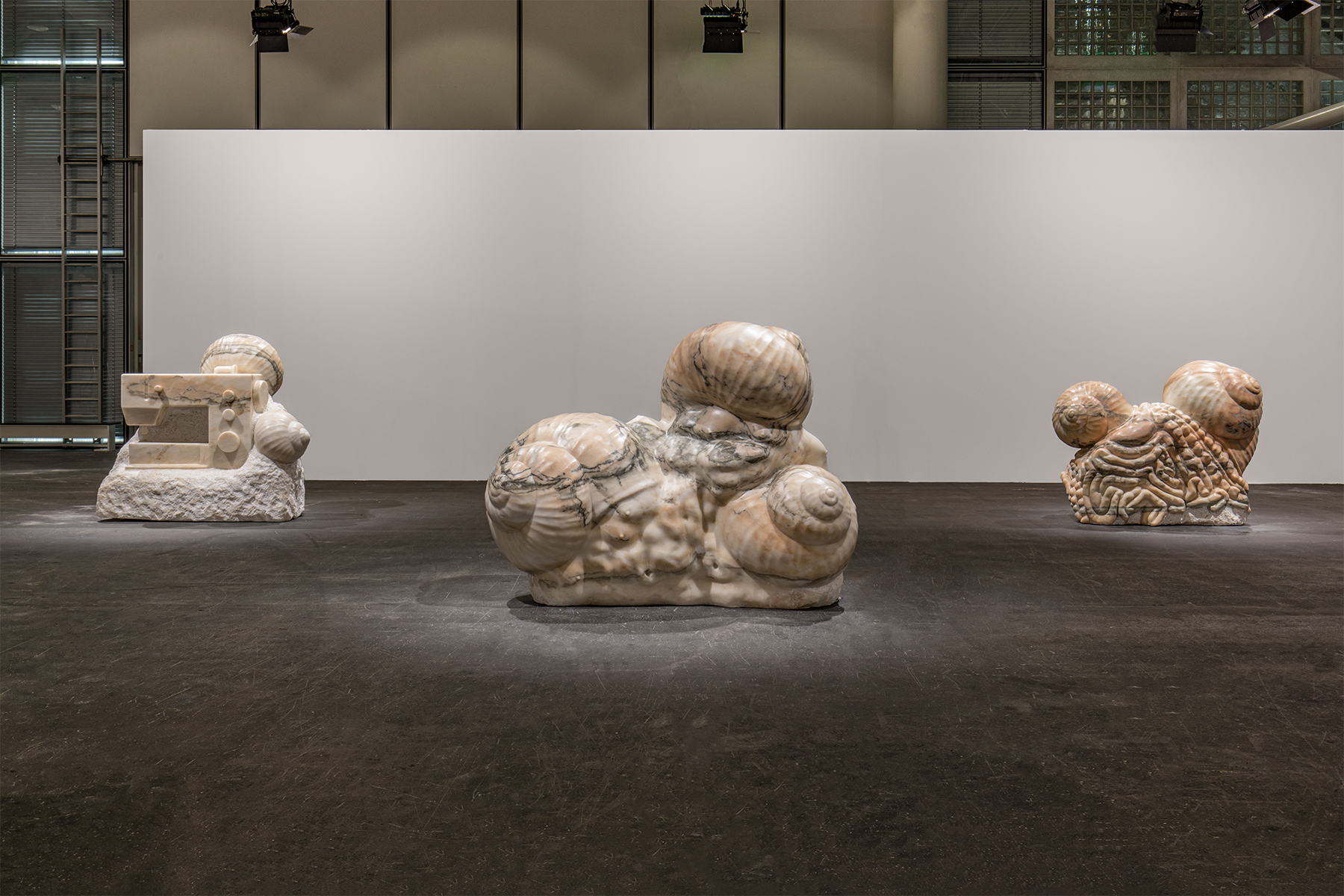
“Stone triptych with snails, body fragments and sewing machine”(2025) acts as a surrealist and erotic meeting point between living creatures and machinery. Improbable scenes emerge from the carved pink marble: molluscs sit atop mammalian body parts, gliding over intestines, human torsos, and a piece of industrial-grade equipment. The sculpture creates an incongruous diorama, founded upon a key idea that permeates the duo’s recent works: a new hierarchy, challenging human exceptionalism and engaging with the ecological concerns of interspecies cohabitation and codependency.
Indeed, the unexpected proximity of disparate elements reveals a series of analogies: the tip of a mammalian nipple mirrors the peak of a snail’s shell; the pink, veiny texture of Rosa Aurora marble recalls human flesh; the rendering of intestines in stone conjure up images of coral or other prehistoric life forms. These parallels, as well as the use of a stone created over millennia from geological concretions of mineral sediments and organic matter, evoke the Aristotelian idea that all things are borne of the same substance.
–
Basel Social Club
Cui Jie‘s work Ceramic Deers and Central Bank of West African States, Abidjan (2025) presented at Basel Social Club, constructing a cross-cultural dialogic space through its distinctive visual syntax. The representative postcolonial financial architecture of West Africa, originally designed by French modernist architects, is deconstructed into precise geometric grids within the artwork. The Ceramic twin-deer sculpture, as a form of Chinese cultural currency, bears witness to the monumental transformations before and after China’s Reform and Opening-up. The austere architectural details interweave with botanical elements and twin deer, forming an uncanny yet poetic stratification. In the contemporary discourse surrounding the Global South, West Africa’s visual cultural landscape emerges as a cross-cultural anamorphic projection—the deer, as docile entities embedded within the banking facade’s rigid surfaces, embody a fusion of organic softness and the unyielding rigidity of futuristic urban systems. This creates a contemporary tableau where boundaries are perpetually dissolving. Such deliberate visual suturing not only suggests the fluidity and recombination of cultural symbols, but more significantly refracts the invisible operations of power structures and the complex spectrum of cultural politics within globalization’s processes.







